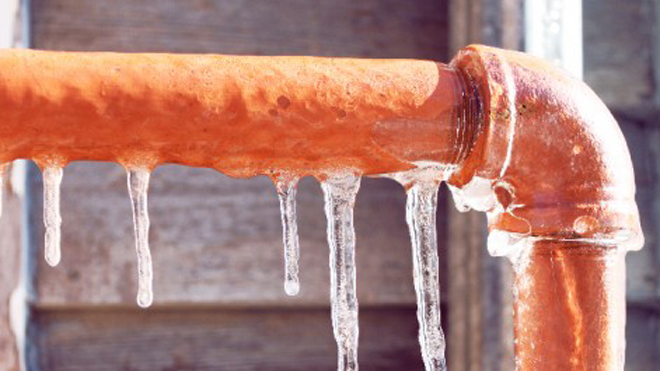How to Defend Your Pipes from Cold Weather: Professional Guidance
Call TodayIn this article in the next paragraphs you'll find a lot of worthwhile material pertaining to Prevent Frozen Pipes .

Cold weather can ruin your plumbing, specifically by freezing pipes. Here's exactly how to avoid it from occurring and what to do if it does.
Intro
As temperature levels decline, the threat of icy pipes increases, possibly resulting in pricey fixings and water damages. Understanding exactly how to avoid frozen pipelines is crucial for home owners in chilly climates.
Understanding Frozen Pipelines
What causes pipelines to freeze?
Pipelines ice up when subjected to temperatures listed below 32 ° F (0 ° C) for extended durations. As water inside the pipelines ices up, it increases, putting pressure on the pipeline walls and potentially creating them to burst.
Dangers and problems
Frozen pipes can bring about water interruptions, residential or commercial property damage, and pricey repairs. Burst pipelines can flood homes and cause considerable architectural damages.
Indications of Frozen Pipeline
Identifying icy pipes early can prevent them from rupturing.
Just how to recognize frozen pipelines
Look for reduced water circulation from faucets, uncommon odors or sounds from pipelines, and visible frost on revealed pipes.
Avoidance Tips
Insulating prone pipes
Wrap pipelines in insulation sleeves or make use of warmth tape to protect them from freezing temperatures. Concentrate on pipes in unheated or outside areas of the home.
Home heating strategies
Keep interior areas appropriately warmed, especially locations with plumbing. Open up cupboard doors to allow cozy air to flow around pipelines under sinks.
Protecting Outside Plumbing
Yard hoses and outdoor faucets
Separate and drain pipes yard tubes prior to wintertime. Install frost-proof faucets or cover exterior faucets with protected caps.
What to Do If Your Pipes Freeze
Immediate actions to take
If you suspect frozen pipelines, maintain taps available to soothe stress as the ice thaws. Use a hairdryer or towels soaked in warm water to thaw pipes slowly.
Long-Term Solutions
Architectural adjustments
Think about rerouting pipes away from outside walls or unheated areas. Include added insulation to attic rooms, basements, and crawl spaces.
Updating insulation
Invest in top notch insulation for pipelines, attic rooms, and walls. Correct insulation assists preserve regular temperatures and minimizes the threat of frozen pipes.
Final thought
Protecting against frozen pipes needs positive procedures and quick actions. By understanding the causes, signs, and preventive measures, homeowners can protect their plumbing during cold weather.
6 Proven Ways to Prevent Frozen Pipes and Protect Your Home
Disconnect and Drain Garden Hoses
Before winter arrives, start by disconnecting your garden hoses and draining any remaining water. Close the shut-off valves that supply outdoor hose bibs and leave the outdoor faucet open to allow any residual water to drain. For extra protection, consider using faucet covers throughout the colder months. It’s also important to drain water from any sprinkler supply lines following the manufacturer’s directions.
Insulate Exposed Pipes
Insulating your pipes is an effective way to prevent freezing. Pipe insulation is readily available at home improvement stores and is relatively inexpensive. Pay close attention to pipes in unheated areas such as the attic, basement, crawl spaces, or garage. Apply foam insulation generously to create a buffer against the cold. You can also wrap your pipes in heat tape or thermostat-controlled heat cables for added warmth.
Seal Air Leaks
Inspect your home for any cracks or openings that could let in cold air. Seal any holes around the piping in interior or exterior walls, as well as the sill plates where your home rests on its foundation. Additionally, make sure to keep your garage door closed unless you’re entering or exiting. Leaving it open creates a significant air leak that can lead to frozen pipes.
Allow Warm Air Circulation
During cold snaps, it’s essential to allow warm air to circulate evenly throughout your home. Leave interior doors ajar to promote better airflow. Open kitchen and bathroom cabinets to help distribute heat consistently around the rooms. If you have small children or pets, be sure to remove any household chemicals or potentially harmful cleaners from open cabinets for safety.
Let Faucets Drip
A small trickle of water can make a big difference in preventing ice formation inside your pipes. When temperatures drop significantly, start a drip of water from all faucets served by exposed pipes. This continuous flow helps prevent the water from freezing. Additionally, running a few faucets slightly can relieve pressure inside the pipes, reducing the chances of a rupture if the water inside does freeze.
https://choateshvac.com/6-proven-ways-to-prevent-frozen-pipes-and-protect-your-home/

As a fervent person who reads on Helpful Tips to Prevent Frozen Pipes this Winter, I figured sharing that article was important. Do you know somebody else who is in the market for the topic? Be sure promote it. Thank you so much for taking the time to read it.
Go Deal Now